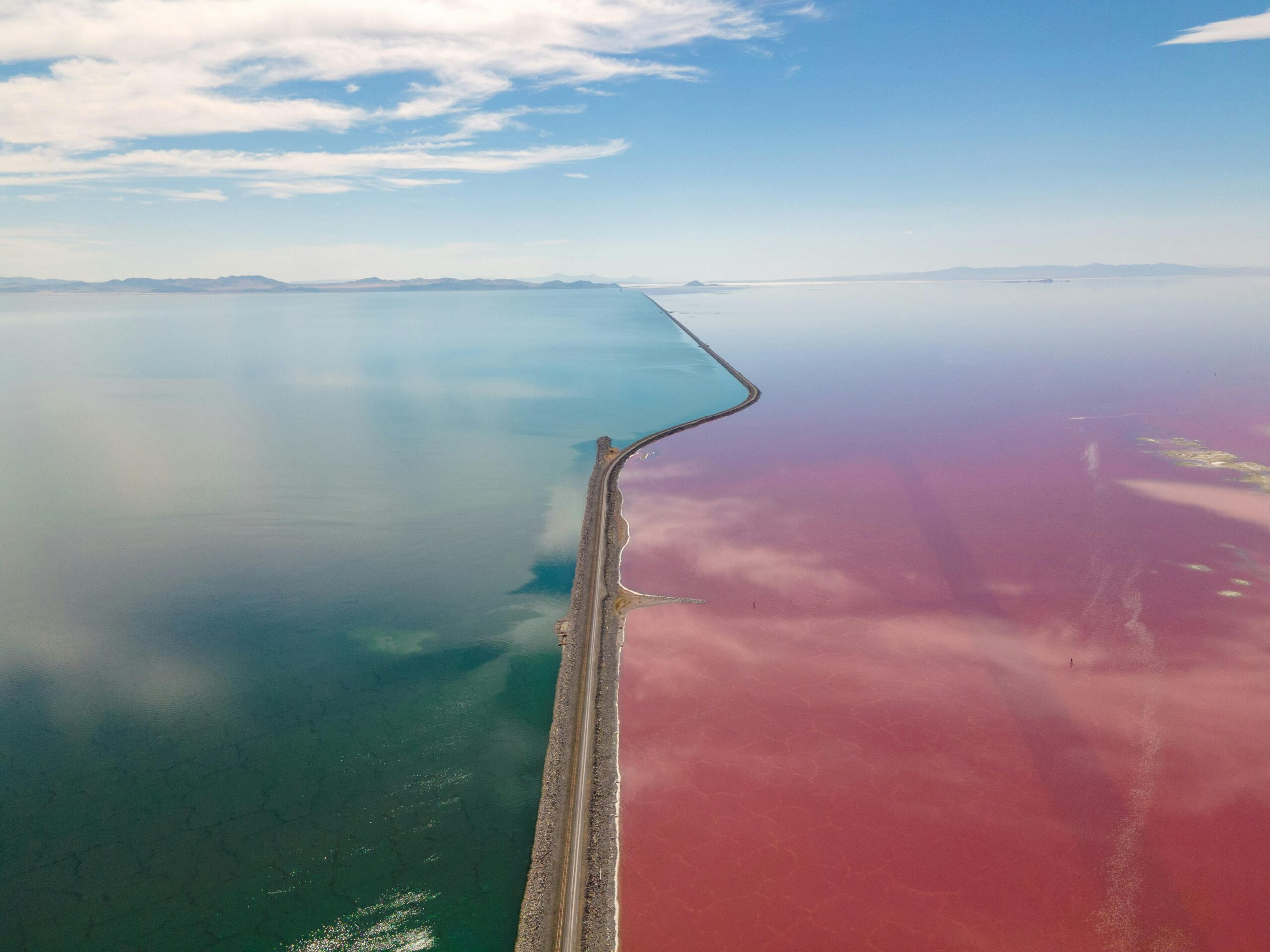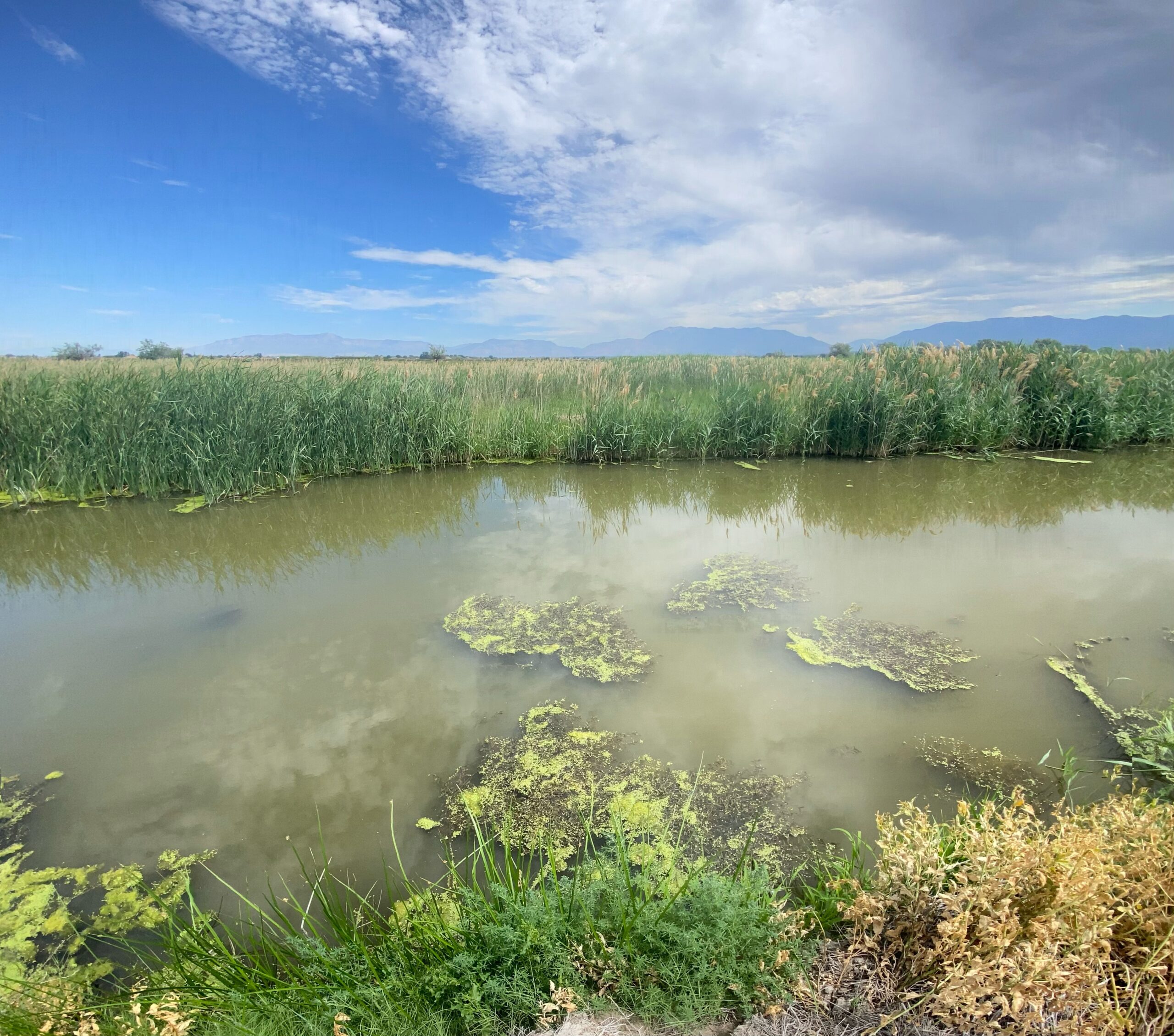Photo Credit: Charles Roscoe Savage
Great Salt Lake is often thought of by Utahns and non-Utahns alike as buggy, boring, smelly, or even a waste of time. However, Great Salt Lake was once the recreational hotspot for Utahns, with dance halls, resorts, campgrounds, and festivities scattered along its shores. While these resorts no longer exist, Great Salt Lake remains a booming ecosystem and natural phenomenon providing beauty and recreation to anyone willing to find it! Here are some ways that we can enjoy Great Salt Lake with friends and family.
State Parks

For those of you looking for some family-friendly natural beauty around Great Salt Lake, the State Parks provide a range of opportunities to learn, recreate, and connect to Utah’s inland sea.
Just 20 minutes from downtown Salt Lake, the Great Salt Lake State Park and Marina has bicycle paths for cyclists, boat tours provided by Exclusive Excursions, campgrounds, bird watching, views of the lake, sailboat and motor boat access, boat slips, and a visitor center. On June 15th, Grow the Flow will be hosting Sailfest ‘24 at the park, which will be a free celebration of Great Salt Lake. We hope to see you there! This State Park is one of the best places to float in the salty water, with public showers on hand. For history buffs and Western art enthusiasts, the park is also a five-minute drive away from the historic Black Rock and Great Saltair.
Antelope Island State Park provides mountain biking, horseback riding, scenic strolls, campsites with views of the lake and mountains, exploring the historic Fielding Garr Ranch, and a telescope at the marina. The visitor center and staff are a fantastic opportunity to learn about the human and ecological history of Great Salt Lake. The island is home to bighorn sheep, antelope, free-range bison, and mule deer, and the causeway often touts thousands of birds on either side. Antelope island is the perfect place to see the wide range of wildlife that call the lake home.
Willard Bay State Park—a freshwater reservoir abutting GSL—has opportunities to fish, swim, waterski, boat, camp, and eagle watch. These parks are a perfect place for an afternoon outing, family gatherings, or a quick overnight trip with friends.
Pink Water

Public areas can also provide opportunities to see the lake’s pink waters due to the presence of halophiles. These creatures survive the North Arm of Great Salt Lake’s high salinity levels and have a rare pigment, which can sometimes give the lake a unique pinkish color, or “pink water.” This phenomenon sets Great Salt Lake apart from many other natural ecosystems. Great Salt Lake’s south arm has a salinity level of around 15%, while the north arm averages approximately 30% salinity–making halophiles the only organisms that can survive in this high-salinity part of the lake. Rozel Point Peninsula on the northeastern lake shore and Stansbury Island on the southwest shore are the best places to see this pink hue in late summer and early fall.
Nature Preserves

Nature preserves—managed by the state and nonprofits alike—dot the shores of Great Salt Lake and protect critical wetland habitats for wildlife, waterfowlers, and birdwatchers.
The Nature Conservancy’s Great Salt Lake Shorelands Preserve is a “bird watcher’s paradise” and a low-intensity opportunity to walk the shores. Many of Great Salt Lake’s largest wildlife gatherings have been seen from this preserve’s visitors center! The preserve provides a free audio tour you can download here, hosts hundreds of elementary school students each year, and maintains a mile-long boardwalk trail to immerse walkers amongst the wetlands and their many species.
An hour north of Salt Lake City, Bear River Migratory Bird Refuge—made famous by Terry Tempest Williams’s Refuge—provides public access to a 12-mile auto tour route and 1.5 miles of walking trails. The Wildlife Education Center is a perfect place for children to learn more about the biome they live in, and you can even borrow binoculars for wildlife viewing. Enjoy cycling, hiking, birding, photography, wildlife watching, running, and fishing here.
Lee Creek Natural Area provides the least-restricted and closest access to Great Salt Lake shores. This preserve is for bird watching in its purest form–no hunting, shooting, collecting, bicycles, dogs, or motorized vehicles allowed–making it ideal for avian photography, birdwatching, and scenic views.
These are three of our favorite preserves; however, the Great Salt Lake ecosystem is home to many other preserves and waterfowl management areas. Do some research and get ready to explore!
Art
For art lovers, the renowned earthwork Spiral Jetty by Robert Smithson can be found on Great Salt Lake’s northeastern shore. Completed in 1970, Spiral Jetty is an example of 20th Century Earthwork Sculpture Land Art. At normal levels, the jetty borders the salted waters, but low water levels have left the sculpture more than a quarter-mile away from the water in recent years. The sculpture is 1500 feet long and 15 feet wide, and was created to interact with the ever-changing conditions of Great Salt Lake and the land around it.
Nancy Holt’s Sun Tunnels are another form of land art that adds to the uniqueness of Great Salt Lake’s watershed. Four massive concrete cylinders make up this piece, angled to align with the sunrise and sunset during the summer and winter solstices. These cylinders also have four pierced holes to represent the stars of four constellations–allowing for a manipulation of light and shadow.
Hiking
The Great Salt Lake ecosystems provides a laundry list of hiking opportunities from short, loop trails to arduous, full day endeavors.
The hikes and their perfect combination of beauty and exercise are my favorite way to enjoy the lake. Some of my tops include: Big Fill Loop, Stansbury Island Loop, Kessler Peak, Farnsworth Peak, and Frary Peak. All of these trails offer spectacular 360º views of Great Salt Lake and the surrounding mountain ranges. Regardless of your proficiency or intention, Great Salt Lake has a hike to fit everyone’s needs.
Utah’s inland sea is an overlooked, invaluable gift to all of us, and it should be nurtured and enjoyed. I encourage you to pick an activity or locale from this post, gather your loved ones, and spend some time connecting with our lake. If we hope to rescue Great Salt Lake, we must see—with our own eyes—why it is worth saving.

